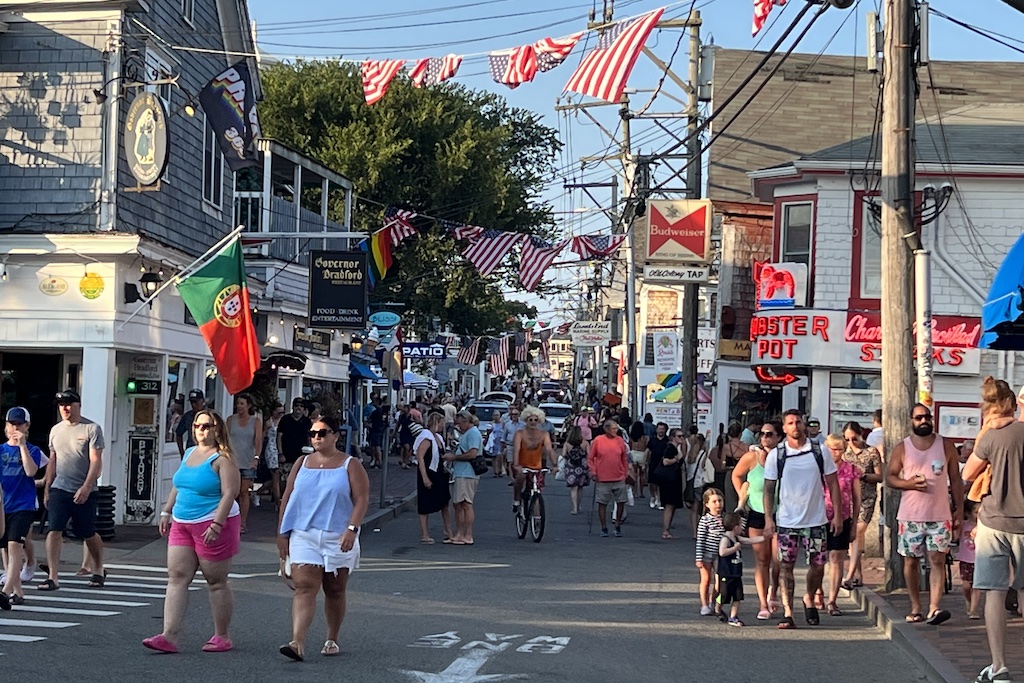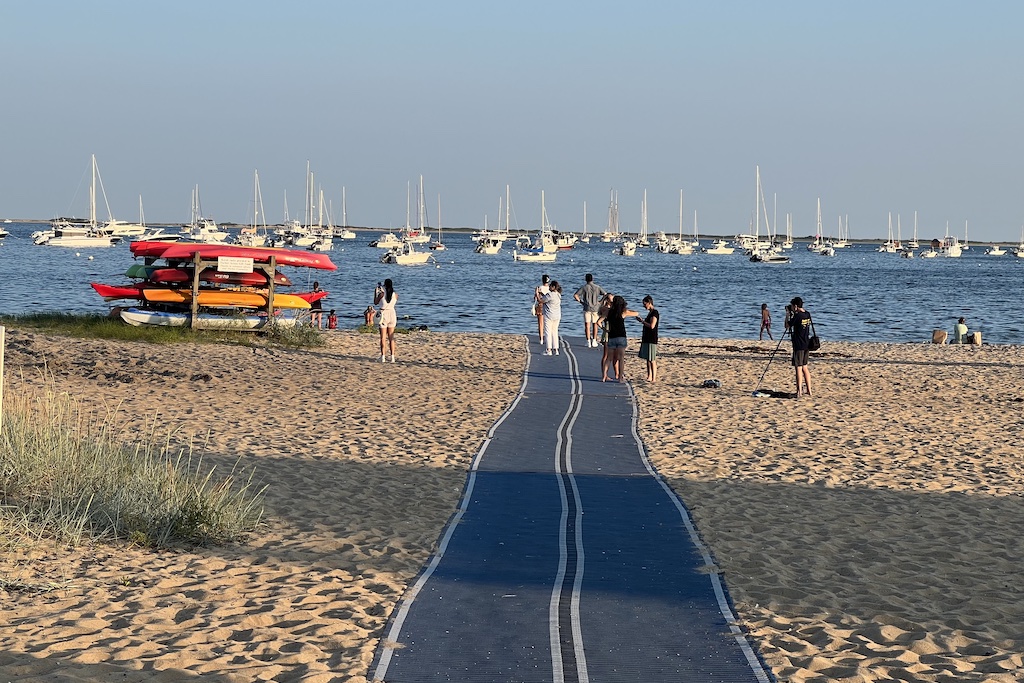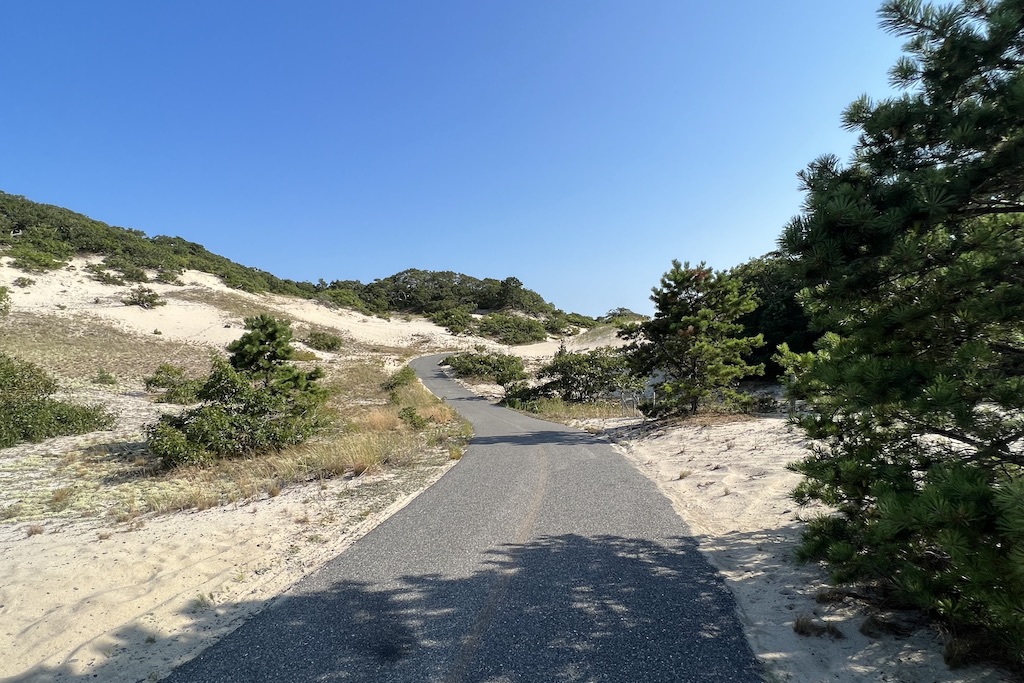Autumn Gear Guide
Find inspiration in our Gear Guide that will keep you out on your bike through wind or rain.
Download NowI can’t even see the rack, there are so many bicycles attached to it. Some are rusty beach cruisers, others are light-framed hybrids, and a handful of kids’ bikes are jammed in-between. I wedge my Trek into the clump of wheels and saddles and affix my U-lock. When I turn around, a man is standing […]
I can’t even see the rack, there are so many bicycles attached to it. Some are rusty beach cruisers, others are light-framed hybrids, and a handful of kids’ bikes are jammed in-between. I wedge my Trek into the clump of wheels and saddles and affix my U-lock.
When I turn around, a man is standing nearby. He wears an official-looking hi-viz vest and grins affably. He looks like a crossing guard, but he’s standing in front of the Town Hall, and I assume he’s some kind of security.
“I’m guessing,” I say, “my bike is pretty safe here, yeah?”
The man stares at me, still grinning.
“Like—I shouldn’t worry about anything happening to it.”
The man guffaws. “Of course!” he blurts. “It’ll be fine!”
I hate to be skeptical, especially on a sunny day in a beloved beach town, but Bradford Street is positively mobbed with people. The crowd courses down the sidewalks, through this little park, in and out of shops. Men hold hands. Kids slurp ice cream. A busker jams on his guitar. Drag queens strut fabulously. And among the hordes of pedestrians, every kind of ride is ridden: bicycles, scooters, skateboards, rollerblades, and tank-like e-bikes, which weave around each other in shambolic bliss.

The Provincetown vibe
Crowds put me on edge, especially in tourist towns I’ve never visited before. My Trek still has that new-bike gleam. But this guy insists it’ll be fine. So I choke down my paranoia and dive into the throng.
Cars are here, too, but they crawl down Bradford an inch at a time. White-knuckled drivers are just visible behind the windshields, and if their feet weren’t pressed so hard against their brakes, they’d probably be kicking themselves for turning onto this anarchic one-way street. All around them dangle banners and Pride flags; restaurants and storefronts are thick with signage. I almost pity them; this town is no place to operate a motor vehicle.
At least that’s the reputation. The nonprofit PeopleForBikes has rated Provincetown the number-one best place in the United States to ride a bicycle. It’s known for a lot of other things, too, like spectacular beachfront and a deeply embedded LGBTQ cultural scene.
But as a native New Englander who had never spent time here, the distinction stunned me. The best place to ride a bike? I marveled. In the whole country? Like, better than Minneapolis? Better than Chicago? Better than Portland, for crying out loud?
This is all happening in 2023, and Provincetown will dip to second place in 2024. There is also a question of category: Provincetown ranks highest among “small” cities (with populations of fewer than 50,000 people). Minneapolis is, predictably, Number One among biggies.

Provincetown loves its bicycles
Cape Cod is a reasonable drive from my home in Rhode Island, and my visits to this hook-shaped peninsula have been criminally brief. I’ve needed to see this alleged bike-friendliness in action, if only to assuage my doubt. So one September morning, I pack up my Forrester and drive up—my Trek in tow.
I’m arriving at the very tail end of the high season, and every hotel is booked solid. Massachusetts is no state for penny-pinchers, and affordable rooms are hard to find anywhere near “P-Town.” Luckily, the Cape is dotted with campgrounds, and I find a site at the Dunes’ Edge, just a kilometer from the main drag.
I raise my tent next to a quarto of young travelers, whose fat-tire mountain bikes lean prominently against the pines. Bikes are stationed around nearly every RV, as well. Dunes’ Edge is operated by The Trustees, a statewide advocacy organization that has spearheaded agricultural and recreational projects for over a century. No one says hello, but I feel like I’m among friends.
Minutes later, I’m bombing toward the main road, which is ostentatiously named the Grand Army of the Republic Highway. The road is busy and fast, but I quickly turn off, headed for the eponymous Dunes.
Smooth pavement rises and falls over creamy sand. Stunted trees and bushes flank each side, their gnarled branches sculpted by coastal winds. I sweat up severe inclines and careen around tight curves. The routes twist and intersect, a soothing maze through the billowing desert.
Back in 1967, the idea of a bike path in a U.S. national park was unheard of. This sounds bizarre today, when cycling infrastructure carves thousands of miles through public acreage, but the Province Lands Bike Trail marked a paradigm shift. The personal physician for President Eisenhower, a man named Dr. Paul Dudley White, was a guest of honor at the Province Lands’ grand opening.

Bike lanes and sand in P-Town
The trail terminates into a road, which leads back into town. Provincetown looks designed for postcards; Cape-style cottages line the narrow streets, and I spot more than a few plein air painters dabbing at canvases. The center point is the Pilgrim Monument, a skinny stone tower that rises 77 meters above the rooftops, its summit constructed like an Italian steeple.
Bike-accessible parkland is one thing; a bike-accessible town is something else. I pass bike-rental businesses, where hundreds of cruisers stand in ranks on expansive parking lots. Riders weave down the side-streets, hopscotching around occasional cars. When I turn onto Bradford Street, bicycles are everywhere. The main artery feels less like a street than a chaotic parade, complete with spandex, wigs, quippy T-shirts, and a blinding array of rainbows.
To my surprise, I see almost no bike lanes. There’s little paint, no guard rails, and nary a sharrow in sight. The roads aren’t wide, and despite the slow speed limits—a deliberate town ordinance—most of the byways are thick with motor traffic. What makes it all work is the sheer number of cyclists in the street, demanding co-existence with every pedal-stroke.
And there’s a lot, of course, that can’t be seen on a casual overnighter. The advocacy group Bike Provincetown notes that cycling has thrived here since the late 19th Century. The 44-kilometer Cape Cod Rail Trail begins (or ends) just a little south of town. Most importantly, Provincetowners routinely travel around on two wheels, not just in the fleeting warmer months. The group’s website quotes mobility specialist Mile Coes: “Provincetown has the country’s most organic bicycle culture. The bike is used as everyday transport by a huge portion of the population all year.”
With such storied integration, who needs a sharrow? Cars can drive wherever they want here, but more often than not, they have to wait their turn.
I take in the nightlife, but conservatively. I have to cross a multi-lane highway back to the campground, and the way is largely unlit; for many hotelgoers, this is no problem, as they can amble from bar to resort with ease. I hop from one quaint pub to another, sampling the IPAs and chatting up locals. At my final stop, I waltz right into a drag show, where a buxom chanteuse is belting show tunes to an enthusiastic crowd, perching herself in laps and mugging into her microphone.
At night’s end, the highway’s shoulder is unwieldy with sand, and I push my bike down the asphalt, against the flow of headlights. I finally zip myself into my tent, drifting off to sleep as the quarto next door gossips by lamplight.

Provincetown sand dunes
I wake up early and pack up. But I can’t resist another spin around the dunes.
This time I take the trail all the way to Race Point Beach, a secluded stretch of sand on the northernmost tip of Cape Cod. I lean my bike against a post—unlocked, because I am now convinced that this area is safe enough. And anyway, there’s hardly anyone here to watch the yolky sun rise over the Atlantic.
A sign warns me that sharks frequent this area, and swimmers should steer clear of harbor seals. I’ve rarely seen these aquatic mammals in real life, and the very idea of spying a seal in the gentle waves feels too magical to be true.
And yet, they appear—little heads popping out of the water. I can barely hear them over the gurgle of the tide, but they’re startlingly close, paddling slowly across ripples of reflected sunlight. I scan the dunes and sea; aside from the lifeguard chairs, this is the same view the Wampanoag people took in for hundreds of pre-Columbian summers. The seals migrate across the horizon, disappearing in the direction of their next stop.
I take a final breath of salty air, then turn toward my Trek.
There’s just one thing left to do: Find myself a lobster roll.
Find inspiration in our Gear Guide that will keep you out on your bike through wind or rain.
Download Now
Leave a comment